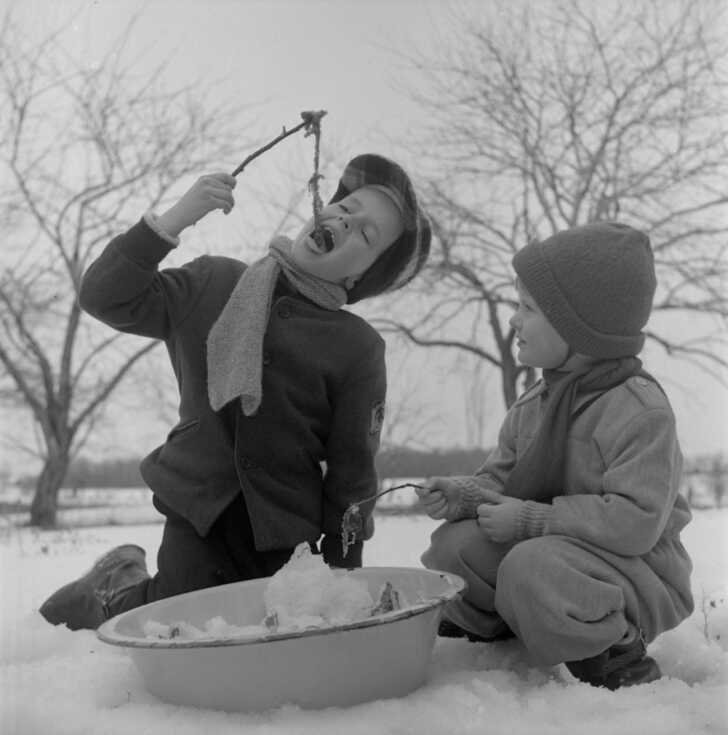Old Photos Show How They Used to Make Maple Syrup – Back When Every Drop Was Hand-Collected
Before modern tubing systems and vacuum pumps, maple syrup production was a labor-intensive tradition passed down through generations. These vintage photos reveal the grueling yet beautiful process of harvesting “liquid gold” the old-fashioned way.
The Traditional Maple Syrup Process (1800s–Early 1900s)
1. Tapping the Trees
-
Workers hand-drilled holes into sugar maple trees using metal spiles (taps).
-
Wooden or metal buckets hung from each tap to catch the dripping sap.
2. Collecting Sap by Hand
-
No tubing systems—farmers emptied each bucket one by one, often hauling sleds or wagons through snow.
-
Horse-drawn sleds transported sap to the sugar shack in barrels.
3. Boiling Down in the Sugar Shack
-
Sap was poured into massive cast-iron kettles or flat pans over a wood fire.
-
It took 40 gallons of sap to make just 1 gallon of syrup—a slow, steamy process.
4. Filtering & Bottling
-
Syrup was strained through wool or linen filters to remove impurities.
-
Stored in glass jars or wooden barrels for sale or family use.
Challenges of Early Maple Syrup Production
❄ Weather-Dependent: Sap only runs during freezing nights and warm days (late winter/early spring).
💧 All Manual Labor: Workers braved knee-deep snow to check hundreds of buckets daily.
🔥 Constant Fire-Tending: Keeping the evaporator boiling required non-stop firewood.
How It’s Changed Today
✔ Plastic Tubing: Most farms now use networked tubing that funnels sap directly to tanks.
✔ Vacuum Pumps: Increases sap yield by up to 50%.
✔ Reverse Osmosis: Removes water before boiling, saving time and fuel.
Why These Photos Matter
They capture a vanishing way of life—when syrup-making was a community event, often involving entire families. Some small farms still use these methods for artisan syrup, preserving history in every bottle.
Fun Fact: Native Americans first discovered maple sap’s sweetness—early colonists learned from them!
Want to taste old-fashioned syrup? Visit a heritage farm in Vermont or Quebec, where some still boil over wood fires. �🍁
(Attached: Black-and-white photos of farmers gathering sap, horse-drawn sleds, and bubbling syrup kettles.)
